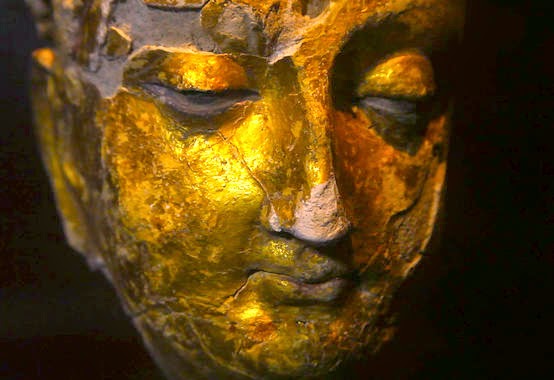 |
| Christopher Marinello, founder of Art Recovery |
by Catherine Schofield Sezgin,
ARCA Blog Editor-in-Chief
Sunday I spoke to Christopher Marinello -- who has presented on several occasions at ARCA's annual art crime conference -- and who is the founder of
Art Recovery International. I interviewed him on the eve of the
anticipated decision of whether or not the
Kunstmuseum in Bern will accept the art collection bequethed to them by Cornelius Gurlitt. The federal government of Germany, the Bavarian Ministry of Culture, and the Kunstmuseum are scheduled to hold a joint press conference on Monday, November 24, 2014 at 11:00 am CET in Berlin
regarding the further handling of Cornelius Gurlitt estate. Marinello represents the Rosenberg heirs seeking restitution of a Matisse painting from the collection of Cornelius Gurlitt, an action suspended when Gurlitt died and bequeathed the art in his possession to a Swiss museum.
Q: Monday morning the Kunstmuseum Bern will announce their decision to accept or reject the controversial Gurlitt collection. What do you think are some of the main issues they have had to consider and what will they try to address at the conference?
CM: I’m certain the Museum Board has considered the possible legal issues they may be facing as well as the cost involved in researching the group of paintings. Not to mention the publicity and potential reputational damage in being known as the Museum that houses the Gurlitt hoard.
Q: What is the position of your clients, the Rosenberg heirs, who have proved that Matisse was looted by the Nazis and yet are still waiting for the painting to be restituted?
CM: We are patiently waiting for the Museum to accept the Gurlitt bequest and honour their pledge to restitute any and all works deemed to have been looted by the Nazis.
Q: Could you speculate for a moment on why Cornelius Gurlitt picked the Bern museum? Did he have a relationship with them or was he just looking for an institution outside of Germany?
CM: There has been a lot of speculation on Gurlitt’s motives but it is clear, in my view, that he was looking to punish the German State for the treatment he received after his “collection” was seized.
Q: When Gurlitt was disposing of the art -- whom did he trust and do you anticipate further revelations about the collection?
CM: There will be a lot more revealed in the future on this topic. I don’t wish to comment further, if you don’t mind.
Q: What is the Gurlitt family's position regarding the collection -- is there a chance they can succeed in getting a part of the collection?
CM: The Gurlitt family has pledged privately to me, and publicly, to return the looted works to their rightful owners.
Q: How long of a process has this been for your clients and has it been caution that has slowed the restitution process?
CM: My clients have been waiting almost 75 years for the return of this picture and others. It has been over two years since this hoard was discovered by German authorities. I would say that this is a textbook example of how not to handle Nazi restitution cases. Caution or inane bureaucracy?
Q: Does the museum board have the authority to make binding restitution decisions once they take possession of the collection?
CM: Yes.
Q: What role do you anticipate that the Bavarian task force will have, if any, once the Gurlitt collection is accepted by the Bern museum?
CM: They may offer their assistance to the Kunstmuseum. We should hear more about this tomorrow.
Q: What kind of burden is placed on museums today in regard to Nazi-looted art in their collections?
CM: The Washington Principles and the ICOM code of ethics made it pretty clear what is expected of museums today. Review your collections. Conduct proper provenance research. Transparency has never been more important.
Q: What kind of assistance is available to museums regarding provenance research through organizations such as Art Recovery International or the
Looted Art Commission?
CM: We offer our services at no cost to cultural institutions that are in need of assistance. Other organisations offer this type of service as well. Help is often available, all they need to do is ask.
Q: Is there a standard report accepted by ICOM to help clarify what is due diligence or satisfactory provenance on artworks in museums?
CM: There are standards set by ICOM and other organisations that museums can follow.
Q: As a lawyer and an art recovery specialist, what would you propose to expedite restitution?
CM: Generally speaking? The opening of archives, more transparency from museums in publishing their collections and their provenance, and more due diligence from every aspect of the art market. Genuine due diligence, not “optical” due diligence.
Q: What have been the lessons learned in the last year in regards to questions of Nazi-looted art in collections such as Gurlitt?
CM: 75 years later we are still facing the issue of Nazi looted art. Largely because the problem was never properly dealt with. Today, banking has become more regulated, the real estate industry is more transparent, yet the art world remains this one big secret. I have no doubt that there are more Cornelius Gurlitts out there. Public and Private collections must be more transparent and due diligence should be an absolute requirement as opposed to a 'best practice' suggestion for the well informed.
 FBI Art Crime Squad,LAPD Art Theft Detail,reward,Stolen Art Recovered
FBI Art Crime Squad,LAPD Art Theft Detail,reward,Stolen Art Recovered
 No comments
No comments
 FBI Art Crime Squad,LAPD Art Theft Detail,reward,Stolen Art Recovered
FBI Art Crime Squad,LAPD Art Theft Detail,reward,Stolen Art Recovered
 No comments
No comments





























